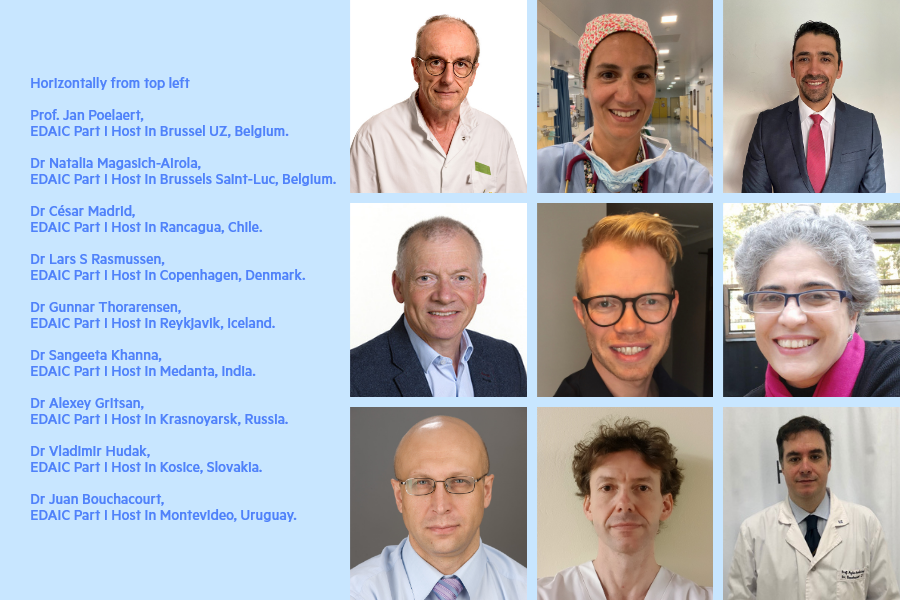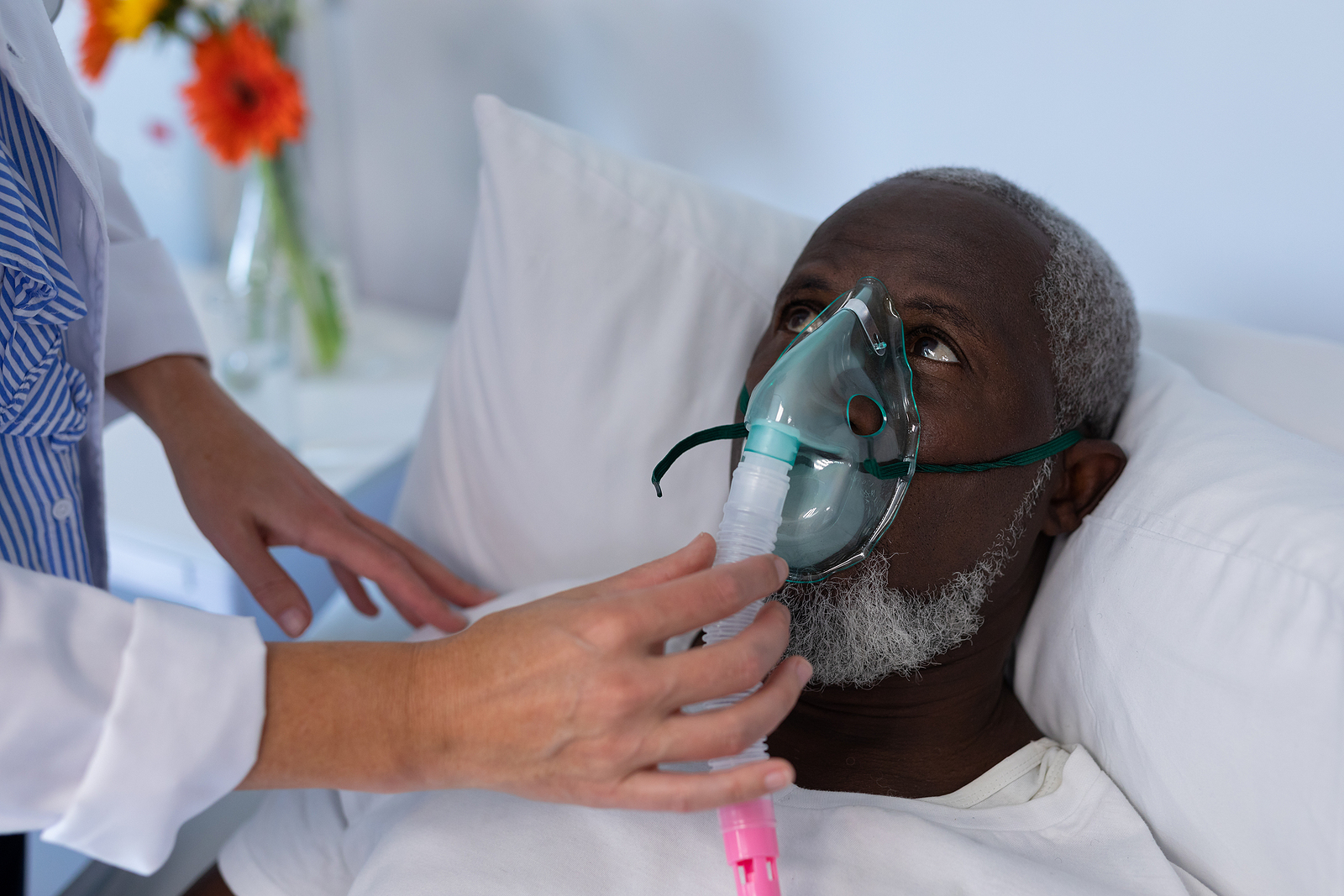Newsletter 2021
Newsletter March 2021: EDAIC Chair report 2020
Dr Andrey Varvinskiy
ESAIC Examinations Committee
Immediate Past Chair
First of all, as I write this article at the beginning of January, I really hope that most of you had a chance to spend some good quality time with your families over the festive period. It is right I believe to mention that we were all glad to see the back of the year 2020, bearing in mind what events it brought into our lives, our family lives and how dramatically it has changed our professional environment.
However, it was not all bad news. For many years we as anaesthesiologists and intensivists were trying to raise the profile of our speciality in the eyes of the general public but it only took few days after the beginning of the current pandemic and the whole world knows now exactly what we are and how important our skills and qualities are for the lives of our patients.
As a Chair of the ESAIC Examinations Committee I wrote to you in spring about our strategy towards On-Line Assessment (OLA), Part I and Part II EDAIC 2020 that we had to adjust quite significantly due to the unprecedented first wave of COVID-19 pandemic. I am pleased to report to you that this strategy was overall quite successful but will provide you with some facts and figures to support this statement.
You might remember that we decided to postpone OLA from its original date of 17.04.2020 until 26.06.2020. It seems that this approach gave an opportunity to many centres to regroup and out of the original record number of registrations (1921), 1412 candidates still registered for the new date. However, out of the original 158 registered centres, only 103 registered for the new date and 99 managed to hold the exam in 88 cities across the world with 1089 candidates actually sitting OLA. Although it does look like a significant drop in numbers, a very similar number of candidates took OLA in 2017 which shows how quickly the popularity of this type of formative assessment of knowledge grew among many schools of anaesthesiology and ICM across many European and non-European countries. Of course, maintaining the OLA in June could only be done thanks to the 99 OLA Hosts who fought to preserve this knowledge assessment in their hospitals at the end of a very exhausting spring season.
The year 2020 was supposed to bring an all-time record for the EDAIC Part I with over 3000 candidates, but it was clearly not the year for setting up the records becoming instead the survival year in many ways, including this examination. We decided to keep the original date of our EDAIC Part I examination on 12.09.2020 as the situation with the pandemic seemed to have improved in many countries during summer, and most hosts seemed to be ready for that date. Again, this approach proved to be successful as the beginning of September was one of the quietest times now known as a hiatus between the first and second wave of the pandemic. Due to technical problems during OLA, all EDAIC Part I centres ran the exam in a paper version only and overall 73 centres worldwide in 41 countries managed to accommodate 2004 candidates! There were several new centres including Brussels UZ, Belgium (Jan Poelaert) & Brussels Saint Luc (Natalia Magasich-Airola); Rancagua, Chile (César Madrid); Copenhagen, Denmark (Lars S Rasmussen); Oulu, Finland (Janne Liisanantti); Reykjavik, Iceland (Gunnar Thorarensen); Medanta, India, New Delhi (Sangeeta Khanna); Krasnoyarsk, Russia (Alexey Gritsan); Kosice, Slovakia (Vladimir Hudak); Montevideo Uruguay (Juan Bouchacourt).
However, in 9 centres the exam had to be cancelled mainly due to restrictions imposed by the local authorities. Again, I wish to stress that this very happy outcome was only made possible thanks to the incredible dedication and flexibility of our Hosts, implementing many complicated measures to ensure both conformities to governmental restrictions and the safety of candidates and invigilators alike.
The winner of the John Zorab Prize for the highest score in EDAIC Part I 2020 was Dr Conrad Lacom from Vienna, Austria.
Our hardest hit came upon the EDAIC Part II examination that normally occurs in a face-to-face format. In 2020 fifteen centres in Europe and one centre in Sao Paolo (Brazil) had registered over 1200 candidates. The season was planned to start on the 7th of March in Madrid in English and Spanish. But I don’t need to refresh your memory of how quickly our lives changed around February-March and the Examination Committee had to make a very hard decision to postpone 8 and cancel 1 (Sao Paolo) exam until the beginning of the autumn season. Then, by June 2020, it became quite likely that this nasty pandemic was not going to be over in a flush and that face-to-face format was no longer feasible.
We really had to think quickly on our feet and have arranged our first pilot online Part II exam for Malta candidates as it is the only country in Europe were both parts of the EDAIC are mandatory. We have used the free version of Zoom and members of the Examinations Committee acted as examiners for 5 candidates. The water was tested successfully, and this format was then used in other 8 centres (Valencia, Erlangen, Porto, Athens, Bucharest, Istanbul, Uppsala and Madrid) finishing right before Christmas on the 20th of December. All these examinations took place over 2 to 4 days registering 627 candidates. In total, we had 30 exam days which equates to 15 exam centres of 2 days each. 188 examiners from different countries gave up their free time mainly over the weekends to help examine those candidates participating on average in 3.3 days of examining on a totally voluntary basis. We, at the Examinations Committee, are profoundly grateful for their high morale, professionalism and desire to support the smooth running of the EDAIC Part II during this most unusual and stressful time. They had to quickly adapt to the new format and stand to the challenge. Also, it could have not been possible to run any of these online examinations without the sterling work of the ESAIC staff led by Hugues Scipioni and main Part II co-ordinator Rodolphe Di Loreto. The new format, logistics and all that surrounds the smooth running of the exam were created at the unprecedented scale of 2 weeks and before the start of the autumn season, several training sessions for the examiners were arranged as well.
I am proud to announce that the winner of the Sir Peter Simpson Prize for the best answer in the EDAIC Part II 2020 is Dr Dikshitha Chetty working in the UAE.
Despite all these efforts around 600 candidates lost their entries for the EDAIC Part II 2020. However, we have planned to run up to 18 online Part II centres in 2021 giving the first priority to all those candidates who had their exam cancelled in 2020. Part II exam season will kick in from March taking place every other weekend with the short break in August and is going to restart again in September. No virus can stand in the way of the online examination we hope and who knows but perhaps by the autumn, we may return to the much-missed face-to-face format.
This article also gives me an opportunity to announce the date for OLA 2021 as of Friday, April the 16th. Part I 2021 will take place on 11th September 2021.
In conclusion, I would like to profoundly thank all of you who were involved in the EDAIC matters in any capacity in 2020. As they say: “What does not kill you, makes you stronger”. This pandemic certainly taught us all many lessons including the new ways of knowledge assessment of our brilliant young colleagues and made us stronger and tougher. Lastly, after having served at the Examinations Committee for 15 years in different roles, I wish my successor, Dr Bazil Ateleanu and the whole team, all the best in making sure that the EDAIC continues to thrive.
Dr Andrey Varvinskiy
ESAIC Examinations Committee
Immediate Past Chair
Read More of our Monthly newsletter.
Read More of our special newsletter covering our virtual congress.
Visit our COVID-19 Resource Hub for other news and resources.













